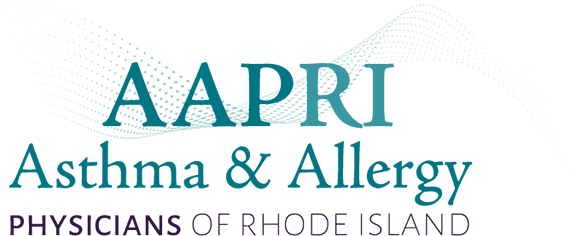As you, the allergy sufferer, probably know, a little knowledge goes a long way when it comes to dealing with your allergies. After all, how are you supposed to cope with your allergy if you’re not even sure what it is? During your early visits with your allergist, you probably discovered the exact nature of your allergies and put together a treatment plan. (Remember those super fun patch tests?) For the sake of furthering your allergy knowledge, here’s a description of some of the most common allergy culprits taken from our own Dr. Z’s e-book, “Allergy Free with Dr. Z”. We highly recommend adding it to your library!
What’s ailing you? Some of the most common allergy culprits
Skin Allergies
- Eczema: A skin abnormality where skin can’t hold moisture correctly, causing highly sensitive patches. Symptoms include patches of dry, red, irritated skin that’s susceptible to infection and prone to sensitization to allergens. Treatment usually includes some sort of cream to help aid the skin in water retention.
Interesting Fact:
50% of children with eczema will develop asthma later on, and 75% will develop the sniffling and sneezing that comes with other types of allergies known as allergic rhinitis (more about it in a bit…)
- Hives: Usually appearing in the form of itchy, red, or skin-colored welts. The cause of the reaction, though difficult to determine, sometimes comes from pine nuts or food sensitivities. Often, the initial allergic reaction starts from some kind of virus. Treatment starts with histamine-receptor blocking medication and should include testing to help find the cause.
Interesting Fact:
Hives can mimic the symptoms of a life-threatening reaction (even though hives themselves are not dangerous.) Therefore, they’re sometimes treated incorrectly in the ER.
Sinus Problems
- Chronic Sinusitis: Swollen and painful nasal cavities occurring for at least 12 weeks. Symptoms include headaches, post nasal drip, sore throat, persistent cough, and difficulty breathing. The cause of chronic sinusitis is often some kind of trauma or defect of nose cartilage (such as a broken nose, deviated septum, or nasal spurs). Treatment can include antibiotics, topical nasal steroids, and saline rinses.
- Vasomotor Rhinitis: When blood vessels and membranes inside the nose become inflamed for nonallergic reasons. Symptoms are chronic nasal congestion, sneezing, and post nasal drip. These symptoms look a lot like allergies. However, vasomotor rhinitis is actually caused by triggers such as smoke, perfume, or rapid change in temperature, not allergies. Treatment can include antihistamine nasal sprays and topical steroids. You should always include testing to rule out allergies as the cause.
Interesting Fact:
Dr. Z calls vasomotor rhinitis “the asthma of nasal passages.” Just like asthma, a hypersensitivity of the airways that tends to cause constriction and swelling, vasomotor rhinitis is a hypersensitivity of the nasal passages that tends to cause congestion.
- Sinus Headaches: Congested, painful headaches caused when your sinuses are irritated. Treatment includes testing for environmental allergens, antihistamines, pain medications such as ibuprofen, and migraine-specific medication if it’s found to be effective.
Other Allergens
- Drug Allergies: These occur when a patient reacts to a medication. Symptoms often include rash or difficulty breathing. Once you have identified the allergic reaction, you must usually the entire family of drugs (like with penicillin).
- Seasonal Allergies: Symptoms include sneezing, itching, coughing, and allergic rhinitis. (Remember how allergies do not cause vasomotor rhinitis? Well, they do cause allergic rhinitis!) They’re caused by an allergy to an environmental allergen such as pollen and react to changes with the seasons. Treatment includes over the counter antihistamines, topical steroid nasal sprays, and learning how to reduce exposure to the allergen.
- Bee Sting Allergies: After being stung by a bee or wasp, patients will experience symptoms ranging from mild swelling and itching to life-threatening anaphylaxis. Treatment can include immunotherapy (or “allergy shots”) to help prevent allergic reactions, EpiPen or other injectable norepinephrine for emergencies, and learning to reduce your chance of exposure.
Conclusion
Arm yourself with the facts about some of the most common allergy culprits! Use your knowledge wisely: if any of these sound familiar and you’re suffering in silence, it may be time for you to visit an allergist to get some help. Dr Z and his colleagues here at AAPRI would love to help you move towards a treatment plan and a life free from out-of-control allergy woes.

